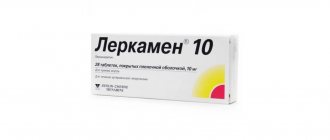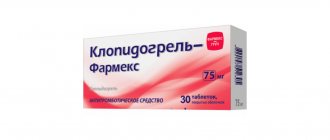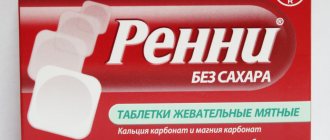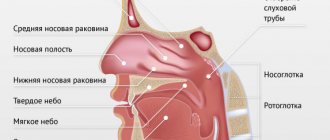Pharmacological properties of the drug Amiocordin
It has antiarrhythmic and antianginal activity. According to the Vaughan-Williams classification, amiodarone belongs to class III antiarrhythmic drugs, although it also has some properties of class I, II and IV antiarrhythmic drugs. It blocks predominantly potassium, as well as sodium and calcium channels and non-competitively inhibits the effect of stimulating α- and β-adrenergic receptors. The antiarrhythmic effect of amiodarone is associated with the ability to increase the duration of the action potential of cardiomyocytes, the effective refractory period of the atria and ventricles, the AV node and the conduction system of the heart, which is accompanied by a decrease in the automaticity of the sinus node, a slowdown in AV conduction, and a decrease in the excitability of cardiomyocytes. The antianginal effect is realized by reducing the myocardial oxygen demand (decreasing heart rate and reducing afterload) and reducing coronary vascular resistance. The antiarrhythmic effect of amiodarone develops approximately 7 days after the start of treatment and reaches a maximum after 15–30 days. After stopping treatment, the effect persists for another 10–30 days. Amiodarone is slowly absorbed when taken orally. Its bioavailability is approximately 40%. The maximum concentration in blood plasma is achieved 3–7 hours after a single dose; a constant therapeutic concentration is achieved after 90–150 days of administration. Amiodarone is metabolized primarily in the liver to form desethylamiodarone, which has similar pharmacological properties. It is excreted mainly in feces and only a small part in urine. The half-life averages from 3.2 to 20.7 hours both after a single oral dose and after intravenous administration; with long-term therapy, the half-life averages 53 ± 24 days. The drug binds to receptors in tissues, resulting in its accumulation.
DANGEROUS MEDICINE
A new remedy has appeared on the Internet, allegedly capable of relieving the buyer of hypertension, vascular problems, protecting the heart and preventing a heart attack in one course. It’s called a panacea (after all, there are no drugs with a similar effect) Micardin . Sold for free, but unfortunately these granules can only save money from your wallet, and here's why:
Looking for documents
The promotion of Micardin began around September 2022. There is simply no truthful and independent information about it, and this is more than strange for a “drug” with such fantastic effects. However, this is not at all strange for a divorce and Internet dummies, see for yourself:
We did not find any mention of a product with this name either in the register of drugs and dietary supplements, or even in the registers of ordinary food products.
Certificates on selling sites are unreadable and do not look real. Just beautiful pictures.
Sellers have no feedback telephone numbers, the manufacturer of Micardin is not indicated, contraindications, product specifications are not indicated, there is nothing but unrealistic promises of effectiveness.
There are fake customer reviews and fake recommendations from fictitious cardiologists, as well as false results of clinical studies with incredible numbers. It is clear that these studies have never been conducted.
However, found on the net
from which you can learn the following:
- Product: Food concentrate based on plant raw materials for the preparation of non-alcoholic drinks (not medicinal, not dietary supplements) labeled “7even”, “Kettox”, “Fruitalica”, “ Micardin ”.
- Reg. number: EAEU N RU D-RU.HB25.B.11551/20
- Manufacturer: Vostok Plus LLC Moscow, Sokolnicheskaya square, building 4a, 3rd floor, room 4, room 11.
- C meets the requirements: On food safety.
As you can see, Micardin is a food concentrate, probably manufactured specifically for trading via the Internet, and, according to this declaration, registered together with a pack of similar concentrates (mainly for weight loss). Micardin is definitely not a medicine, a dietary supplement, it is only called a drug in advertising, so it cannot cure anything, especially incurable diseases.
Unfortunately, scamming hypertensive patients is a very common practice of traders on the Internet; miracle concentrates have been treating us for many years. Such scams as Arterio and Normio , Hyperopril, Carditonus, Hypertox, Neocard, CardiOK do not leave the advertising platforms of social networks and even large advertising aggregators, be careful.
Special danger: Since Micardin is sold through call centers, the operator on the phone will try by all means to convince you of the need to be treated with this particular “drug”. Sometimes such consultants advise not to see a doctor, not to talk to relatives about the purchase, and even to stop taking prescribed medications. Such advice can simply destroy a truly sick person. Cardiovascular disease is the most common cause of premature death. Therefore, treating them with the help of Internet dummies is extremely dangerous.
Reviews
At the moment, there are no real reviews about Micardin, as well as no independent and non-advertising information. If you ordered this product, please share your impressions about the purchasing process, the price of the product and its actual effectiveness. We advise you to be especially careful and skeptical when ordering and purchasing these capsules, especially for people who have serious problems with the heart and blood vessels. It is dangerous to undergo treatment without consulting a real doctor, especially over the Internet.
Similar: Friocard, Metacardil, Cardiosoft, Arteriale,
Cardisen, Tensital, Cardipal, Cardineo, Tonerin, Artinol
SHARE:
Indications for use of the drug Amiocordin
Prevention and treatment of paroxysmal heart rhythm disturbances - sinus tachycardia, supraventricular tachyarrhythmia, including atrial flutter and fibrillation, ventricular tachyarrhythmia, ventricular and supraventricular extrasystoles, rhythm disturbances in patients with WPW syndrome; for the prevention of angina attacks (stable, unstable, spontaneous) in patients with cardiac arrhythmias in whom treatment with other antiarrhythmic drugs has proven ineffective or contraindicated; in the acute phase of myocardial infarction with an increased risk of heart rhythm disturbances. IV therapy is prescribed when it is necessary to obtain a rapid therapeutic effect or when it is impossible to take the drug orally, for the treatment and prevention of paroxysmal heart rhythm disturbances (sinus tachycardia, supraventricular tachycardia, including atrial flutter and fibrillation, ventricular tachyarrhythmia, ventricular and supraventricular extrasystoles , WPW syndrome) and recorded symptomatic heart rhythm disturbances.
Use of the drug Amiocordin
The dose is set individually. The tablet should be swallowed whole with a small amount of water. The tablets can be taken during or after meals. Initial treatment: usual dosage - from 600 to 1000 mg / day in 1 dose or divided into 2-3 doses. Initial treatment usually lasts 8 to 10 days. Maintenance treatment: used in the minimum effective dose, usually from 100 to 400 mg/day in 1–3 doses. An alternative is to take double the daily dose every other day or take a therapeutic dose for 5 days with a break on Saturday and Sunday. Injections: the dose is selected depending on the patient's condition. IV injection . The usual dose is 5 mg/kg body weight and should be administered over at least 3 minutes. Repeated intravenous injection should not be done earlier than 15 minutes after the first injection, even if only part of the contents of 1 ampoule was used. The therapeutic effect appears within the first minutes after administration of amiodarone and then gradually decreases. In this regard, to maintain a stable effect, intravenous infusion of the drug is necessary. IV infusion . The initial dose is usually 5 mg/kg body weight and is administered in 250 ml of 5% glucose solution over 20 minutes to 2 hours. The infusion rate is adjusted in accordance with the therapeutic effect of the drug. This dose can be repeated 2-3 times within 24 hours. The maximum daily dose should not exceed 1200 mg. A maintenance dose of 10–20 mg/kg/day (usually 600–800 mg/day, maximum 1200 mg/day) is administered in 250 ml of 5% glucose solution. Infusion therapy usually lasts 4–5 days. Oral therapy should begin on the first day of infusion.
Contraindications to the use of the drug Amiocordin
Hypersensitivity to any of the components of the drug or to iodine, sinus bradycardia or sinoatrial block, sick sinus syndrome (if a pacemaker is not installed), acute conduction disturbance (if a pacemaker is not installed), simultaneous use of drugs that can cause polymorphic ventricular tachycardia pirouette type, thyroid dysfunction, pregnancy (except when the drug is prescribed for health reasons) and breastfeeding. The IV form of the drug is contraindicated in hypotension, severe respiratory failure, decompensated cardiomyopathy and severe heart failure.
Side effects of the drug Amiocordin
Some patients have bradycardia (HR ≤55 beats/min). Amiodarone may worsen existing arrhythmias or cause new arrhythmias. If heart rate is ≤55 beats/min, treatment should be interrupted. Amiodarone can cause heart failure or aggravate existing heart failure (simultaneous administration of cardiotonics is necessary). Gastrointestinal side effects include nausea, vomiting, constipation, and anorexia; in isolated cases, transient liver failure is observed (accompanied by an increase in the activity of liver enzymes). Hepatotoxicity may also manifest itself in the form of acute liver failure (increased activity of liver enzymes, jaundice) and chronic liver failure (as a result of the development of pseudoalcoholic hepatitis, cirrhosis), therefore it is recommended to frequently monitor liver function, especially in patients with pre-existing liver failure, and interrupt amiodarone treatment if necessary. Treatment with amiodarone may be associated with the appearance of microsediment in the upper layers of the cornea (as a rule, this does not cause any visual impairment, but extremely rarely it can cause the appearance of a colored halo in the field of vision when looking against the light). There is no need to interrupt treatment, but the patient should undergo an ophthalmological examination. Hypothyroidism or hyperthyroidism may occur during or after discontinuation of amiodarone treatment. In this case, treatment with amiodarone should be discontinued. For hypothyroidism, replacement therapy is prescribed, and for hyperthyroidism, temporary thyreostatic therapy is carried out. Cough and progressive dyspnea indicate direct or indirect pulmonary toxicity of amiodarone. Conditions such as interstitial pneumonia, pneumosclerosis, pleurisy, and obliterating bronchitis may develop. These side effects are usually temporary. In case of hypersensitivity to amiodarone, treatment should be discontinued and GCS should be prescribed. Photosensitivity may develop during treatment with amiodarone and several weeks after stopping it, so sunscreen should be used on exposed areas of the body in summer. Neurological disorders are possible during amiodarone therapy in the form of paresthesia, tremor, ataxia, headache, optic neuritis, polyneuropathy, dizziness and auditory hallucinations. Other side effects include myopathy, epididymitis, taste in the mouth, hair loss, and fatigue.
Amiocordin
From the nervous system: headache, weakness, dizziness, depression, feeling of fatigue, paresthesia, auditory hallucinations, with long-term use - peripheral neuropathy, tremor, memory impairment, sleep, extrapyramidal manifestations, ataxia, optic neuritis, with parenteral use - intracranial hypertension.
From the senses: uveitis, lipofuscin deposition in the corneal epithelium (if the deposits are significant and partially fill the pupil - complaints of luminous spots or a veil before the eyes in bright light), retinal microdetachment.
From the cardiovascular system: sinus bradycardia (refractory to m-anticholinergics), AV block, with long-term use - progression of CHF, tachycardia of the "pirouette" type, intensification of existing arrhythmia or its occurrence, with parenteral use - decrease in blood pressure.
Metabolism: increased T4 levels with normal or slightly reduced T3 levels, hypothyroidism, thyrotoxicosis (drug discontinuation required).
From the respiratory system: with long-term use - cough, shortness of breath, interstitial pneumonia or alveolitis, pulmonary fibrosis, pleurisy, with parenteral use - bronchospasm, apnea (in patients with severe respiratory failure).
From the digestive system: nausea, vomiting, loss of appetite, dullness or loss of taste, feeling of heaviness in the epigastrium, abdominal pain, constipation, flatulence, diarrhea, rarely - increased activity of liver transaminases, with long-term use - toxic hepatitis, cholestasis , jaundice, liver cirrhosis.
Laboratory indicators: with long-term use - thrombocytopenia, hemolytic and aplastic anemia.
Allergic reactions: skin rash, exfoliative dermatitis.
Local reactions: with parenteral use - phlebitis.
Other: myopathy, epididymitis, decreased potency, alopecia, vasculitis, photosensitivity (skin hyperemia, weak pigmentation of exposed skin areas), lead-blue or bluish pigmentation of the skin, with parenteral use - fever, increased sweating. Overdose. Symptoms: bradycardia, AV block, decreased blood pressure.
Treatment: gastric lavage, administration of cholestyramine; for bradycardia - beta-adrenergic agonists or installation of a pacemaker; for tachycardia of the “pirouette” type - intravenous administration of Mg2+ salts, cardiac stimulation. Hemodialysis is ineffective.
Special instructions for the use of the drug Amiocordin
Treatment using the parenteral form of the drug should be carried out by a physician experienced in the treatment of arrhythmias, preferably in intensive care units under the monitoring of blood pressure, heart rate and ECG. The time of administration of the first dose should be at least 3 minutes. A repeated intravenous injection should be administered no earlier than 15 minutes after the first injection. If possible, the solution for injection should be administered as an intravenous infusion. Hypotension, bradycardia, and AV block may occur during infusion therapy, so the dose and rate of infusion must be carefully monitored. Since IV infusions of amiodarone may be accompanied by phlebitis, it is recommended to administer the drug through a central venous catheter. Before starting treatment, it is recommended to register an ECG, quantify TSH and determine the level of potassium in the blood serum. The incidence and severity of side effects are dose-dependent, so the drug should be used in the minimum effective dose. Since bradycardia may occur in older patients, the drug should be used with caution in them. Amiodarone may cause changes in the ECG, in particular prolongation of the QT (due to prolongation of repolarization) and the appearance of a U . These changes are not associated with cardiotoxic effects. If sinoatrial block, II-III degree AV block, or bifascicular block occurs, treatment with the drug should be discontinued. When treating with amiodarone, an ECG should be regularly monitored (once every 3 months, as well as when new attacks of arrhythmia occur or signs of exacerbation of the underlying disease). Progressive dyspnea and nonproductive cough may be signs of amiodarone pulmonary toxicity. It is recommended to carry out regular X-ray monitoring of the chest organs and functional breathing tests (once every 6 months or when signs of lung disease develop). Amiodarone may cause thyroid dysfunction, especially in patients with a history of thyroid disease (including a family history). Monitoring thyroid function is recommended before, during and for several months after stopping treatment. During treatment with amiodarone, the activity of liver enzymes in the blood serum should be regularly monitored. Considering the possibility of developing photosensitivity during this period, it is advisable to apply sunscreen to exposed skin in the summer. The effectiveness and safety of amiodarone in children have not been established. The use of amiodarone during pregnancy and breastfeeding is contraindicated. It can be prescribed to pregnant women only in emergency cases (if other antiarrhythmic drugs are ineffective), only when the expected benefit to the expectant mother outweighs the potential risk to the fetus. In some patients, amiodarone may impair the ability to drive or operate potentially dangerous machinery.
Amiocordin tablets 200 mg, 30 pcs.
Antiarrhythmic drugs. Many antiarrhythmic drugs suppress cardiac automaticity, conduction and contractility of the myocardium.
The simultaneous use of antiarrhythmic drugs belonging to different classes can achieve a favorable therapeutic effect, but most often treatment with such a combination is a very delicate process that requires careful clinical and ECG monitoring. The simultaneous use of antiarrhythmic drugs that can induce the occurrence of torsades de pointes (such as amiodarone, disopyramide, quinidine compounds, sotalol and others) is contraindicated.
Concomitant use of antiarrhythmic drugs of the same class is not recommended, except in exceptional cases, since such treatment increases the risk of cardiac side effects.
Concomitant use with drugs that have a negative inotropic effect slows the heart rate and/or slows AV conduction and therefore requires careful clinical and ECG monitoring.
Medicines that can induce the development of torsades de pointes. This arrhythmia can be induced by certain drugs, whether they are antiarrhythmic drugs or not. Favorable factors include hypokalemia (see section "Drugs that lower potassium levels"), bradycardia (see section "Drugs that slow heart rate") or congenital or acquired prolongation of the QT interval.
Drugs that can cause torsades de pointes include, in particular, class Ia and III antiarrhythmic drugs and some antipsychotics. For dolasetron, erythromycin, spiramycin and vincamine, this interaction occurs only when using dosage forms for intravenous administration.
The simultaneous use of two drugs, both of which are drugs that contribute to the occurrence of torsades de pointes, is usually contraindicated.
However, methadone, antiparasitic drugs (halofantrine, lumefantrine, pentamidine) and antipsychotics, the use of which is considered absolutely necessary, are not contraindicated, but are not recommended for use concomitantly with other drugs that contribute to the occurrence of torsades de pointes.
Drugs that slow the heart rate.
Many drugs can cause bradycardia, particularly class Ia antiarrhythmic drugs, beta blockers, some class III antiarrhythmic drugs, some calcium channel blockers, digitalis drugs, pilocarpine, and anticholinesterase drugs.
Effects of amiodarone on other drugs.
Amiodarone and/or its metabolite, desethylamiodarone, inhibit CYP1A1, CYP1A2, CYP3A4, CYP2C9, CYP2D6, and P-glycoprotein and may increase exposure to their substrates. Given the long duration of effect of amiodarone, such interactions may be observed for several months after discontinuation of amiodarone treatment.
Effects of other drugs on amiodarone.
Inhibitors of CYP3A4 and CYP2C8 may inhibit the metabolism of amiodarone and thus increase its exposure.
CYP3A4 inhibitors (eg, grapefruit juice and certain drugs) should generally not be used during treatment with amiodarone.
Contraindicated combinations (see section “Contraindications”). Medicines that can induce torsades de pointes (with the exception of antiparasitic drugs, antipsychotics and methadone, see section “Not recommended combinations”):
- class Ia antiarrhythmic drugs (quinidine, hydroquinidine, disopyramide);
- class III antiarrhythmic drugs (dofetilide, ibutilide, sotalol);
- other drugs such as: arsenic compounds, bepridil, cisapride, citalopram, escitalopram, difemanil, dolasetron (intravenous), domperidone, dronedarone, erythromycin (intravenous), levofloxacin, mechitazine, mizolastine, vincamine (intravenous), moxifloxacin, prucalopride, spiramycin (c), toremifene.
Increased risk of developing ventricular arrhythmias.
Telaprevir. Disorders of automatism and conduction of cardiomyocytes with the risk of excessive bradycardia.
Cobicistat. There is a risk of increased incidence of amiodarone-induced side effects due to decreased metabolism.
Not recommended combinations (see Section “Peculiarities of application”).
Sofosbuvir. Only in patients receiving dual combination therapy with daclatasvir/sofosbuvir or ledipasvir/sofosbuvir: bradycardia, possibly symptomatic or even fatal. If use of this combination cannot be avoided, close clinical and ECG monitoring is necessary, especially during the first few weeks of dual therapy.
CYP3A4 substrates. Amiodarone is a CYP3A4 inhibitor and increases plasma concentrations of CYP3A4 substrates, resulting in a potential increase in the toxicity of these substrates.
Cyclosporine. Increased serum concentrations of cyclosporine due to deterioration of its metabolism in the liver, with the risk of nephrotoxic effects.
Quantitative determination of serum cyclosporine concentrations, monitoring of renal function and dose adjustment of cyclosporine during treatment with amiodarone.
Fluoroquinolones. With the exception of levofloxacin and moxifloxacin (combinations are contraindicated). Increased risk of developing ventricular arrhythmias.
Diltiazem for injection. Risk of developing bradycardia and AV block.
If use of this combination cannot be avoided, close clinical supervision and continuous ECG monitoring are extremely important.
Fingolimod. Potentiation of bradycardia-induced effects, possibly with fatal outcome. This is especially true for beta blockers, which inhibit adrenergic compensation mechanisms. After the first dose of the drug, clinical observation and continuous ECG monitoring should be carried out for 24 hours.
Verapamil for injection. Risk of developing bradycardia and AV block.
If use of this combination cannot be avoided, close clinical supervision and continuous ECG monitoring are extremely important.
Antiparasitic drugs that can induce torsades de pointes (halofantrine, lumefantrine, pentamidine). Increased risk of developing ventricular arrhythmias. If possible, 1 or 2 drugs should be discontinued. If the use of this combination cannot be avoided, it is extremely important to perform a preliminary assessment of the QT interval and perform ECG monitoring.
Neuroleptics that can induce torsades de pointes (amisulpride, chlorpromazine, cyamemazine, droperidol, fluphenazine, haloperidol, levomepromazine, pimozide, pipamperone, pipothiazine, sertindole, sulpiride, sultopride, tiapride, zuclopenthixol). Increased risk of developing ventricular arrhythmias.
Methadone. Increased risk of developing ventricular arrhythmias.
Stimulant laxatives. Increased risk of ventricular arrhythmias, especially ventricular tachycardia torsades de pointes (in this case, hypokalemia is a provoking factor). Before using the drug, any hypokalemia should be corrected and ECG monitoring and clinical observation should be performed to monitor electrolyte levels.
Fidaxomicin. Increased concentrations of fidaxomicin in blood plasma.
Combinations that require precautions during use.
Vitamin K antagonists: Increased effects of vitamin K antagonists and increased risk of bleeding. Frequent monitoring of the international normalization ratio (INR). It is possible to adjust the dose of the vitamin K antagonist during treatment with amiodarone and for 8 days after discontinuation of the drug.
Phenytoin (by extrapolation, also fosphenytoin). Increased plasma concentrations of phenytoin with signs of overdose, especially neurological signs (inhibition of phenytoin metabolism in the liver). Clinical monitoring, quantitative determination of plasma concentrations of phenytoin and possible dose adjustment.
Beta blockers, except sotalol (a combination contraindicated) and esmolol (a combination that requires precautions for use). Impaired automaticity and conductivity (suppression of compensatory sympathetic mechanisms). ECG and clinical monitoring.
Beta blockers used for heart failure (bisoprolol, carvedilol, metoprolol, nebivolol). Impaired myocardial automaticity and conduction with the risk of excessive slowing of the heart rate. Increased risk of developing ventricular arrhythmias. Clinical and regular ECG monitoring.
Dabigatran. Increased plasma concentrations of dabigatran with an increased risk of hemorrhagic phenomena. Clinical monitoring and dose adjustment of dabigatran if necessary, but not more than 150 mg/day.
Because amiodarone has a long half-life, interactions may occur for several months after discontinuation of amiodarone treatment.
P-glycoprotein substrates. Amiodarone is a P-glycoprotein inhibitor. It is expected that when used simultaneously with P-glycoprotein substrates, their concentration in the blood will increase.
CYP2C9 substrates. Amiodarone increases concentrations of substances that are CYP2C9 substrates, such as vitamin K antagonists or phenytoin, by inhibiting cytochrome P4502C9 enzymes.
Foxglove preparations. Inhibition of automaticity (excessive slowing of heart rate) and disruption of AV conduction.
When using digoxin, an increase in digoxin levels in the blood is observed due to a decrease in digoxin clearance.
ECG and clinical monitoring, quantitative determination of digoxin levels in the blood and, if necessary, adjustment of the digoxin dose.
Diltiazem for oral use. Risk of developing bradycardia or AV block, especially in elderly patients. ECG and clinical monitoring.
Some macrolides (azithromycin, clarithromycin, roxithromycin). Increased risk of developing ventricular arrhythmias.
ECG and clinical monitoring during the simultaneous use of these drugs.
Verapamil for oral use. Risk of developing bradycardia and AV block, especially in elderly patients. ECG and clinical monitoring.
Esmolol. Violation of contractility, automatism and conductivity (suppression of compensatory sympathetic mechanisms). ECG and clinical monitoring.
Drugs that reduce potassium levels: diuretics, reduce potassium levels (isolated or in combination), stimulant laxatives, amphotericin B (with intravenous administration), glucocorticoids (with systemic use), tetracosactide. It is necessary to prevent the occurrence of hypokalemia (and correct hypokalemia), and the duration of the QT interval should be carefully monitored. In the case of paroxysmal ventricular tachycardia “torsades de pointes”, antiarrhythmic drugs should not be used (ventricular pacing must be started; magnesium supplements may be administered). Increased risk of ventricular arrhythmias (hypokalemia is a favorable factor). It is necessary to eliminate hypokalemia before prescribing the drug and monitor ECG, electrolytes and clinical monitoring.
Lidocaine. The risk of increased plasma concentrations of lidocaine with possible neurological and cardiac side effects due to amiodarone inhibition of drug metabolism in the liver. Clinical and ECG monitoring, as well as, if necessary, quantitative determination of plasma lidocaine concentrations. If necessary, adjust the dose of lidocaine during treatment with amiodarone and after its discontinuation.
Drugs that slow the heart rate. Increased risk of developing ventricular arrhythmias. Clinical and ECG monitoring.
Orlistat. Risk of decreased plasma concentrations of amiodarone and its active metabolite. Clinical monitoring and, if necessary, ECG monitoring.
Tamsulosin. The risk of increased side effects caused by tamsulosin due to inhibition of its metabolism in the liver. Clinical monitoring should be carried out and, if necessary, the dose of tamsulosin should be adjusted during treatment with an enzyme inhibitor and after discontinuation of its use.
Voriconazole. Increased risk of ventricular arrhythmias, especially ventricular tachycardia "torsades de pointes", as there may be a decrease in the metabolism of amiodarone. It is necessary to carry out clinical observation and ECG monitoring and, if necessary, adjust the dose of amiodarone.
Tacrolimus. Increased concentrations of tacrolimus in the blood due to suppression of its metabolism by amiodarone. Quantitative determination of tacrolimus blood concentrations, monitoring of renal function and dose adjustment of tacrolimus during concomitant use of amiodarone and during its withdrawal.
CYP2D6 substrates
Flecainide. Amiodarone increases plasma levels of flecainide by inhibiting cytochrome CYP2D6. Therefore, the dose of flecainide should be adjusted.
CYP3A4 substrates. Amiodarone is an inhibitor of CYP3A4 and increases the plasma concentration of substrates of this cytochrome, as a result, increases the toxic effect of these substrates.
Fentanyl: Combination with amiodarone may enhance the pharmacological effects of fentanyl and increase the risk of toxicity. Statins (simvastatin, atorvastatin, lovastatin). Concomitant use of amiodarone and statins metabolized by CYP3A4, such as simvastatin, atorvastatin and lovastatin, increases the risk of muscle toxicity (eg, rhabdomyolysis). When used concomitantly with amiodarone, it is recommended to use statins that are not metabolized by CYP3A4.
Other drugs that are metabolized by CYP3A4 (lidocaine, tacrolimus, sildenafil, midazolam, dihydroergotamine, ergotamine, colchicine, triazolam). Amiodarone is an inhibitor of CYP3A4 and increases the plasma concentrations of these molecules, leading to a potential increase in their toxicity.
Combinations that require special attention.
Pilocarpine. Risk of excessive slowing of heart rate (additive effects of drugs that slow heart rate).
Drug interactions Amiocordin
Due to its long half-life, amiodarone may cause drug interaction effects even several months after stopping it. The simultaneous administration of amiodarone and antiarrhythmic drugs, including bepridil, class I antiarrhythmic drugs, drugs such as quinidine, sotalol, as well as some other drugs that do not belong to the group of antiarrhythmic drugs, such as vincamine, sultopride, erythromycin (iv) and pentamidine ( IV), as this can lead to the development of polymorphic ventricular tachycardia of the pirouette type. Due to the increased risk of bradycardia and AV block, it is not recommended to prescribe amiodarone concomitantly with the calcium antagonists diltiazem and verapamil, as well as with beta-adrenergic blockers. Due to the increased risk of developing ventricular arrhythmia, simultaneous administration of amiodarone and laxatives that can lead to hypokalemia is not recommended. The simultaneous administration of amiodarone and tricyclic antidepressants, phenothiazines, astemizole or terfenadine causes prolongation of the QT interval and increases the risk of developing ventricular arrhythmia, especially torsade de pointes. When taking amiodarone and warfarin, digoxin, phenytoin and cyclosporine simultaneously, the concentration of these drugs in the blood serum should be monitored and their dose reduced accordingly (warfarin by 1/3–1/2, and the dose of digoxin by 1/2). The simultaneous administration of amiodarone and diuretics that promote potassium excretion, corticosteroids or amphotericin B (iv) may, due to hypokalemia, cause a prolongation of the QT and increase the risk of developing ventricular arrhythmia, including torsades de pointes. The simultaneous administration of amiodarone and cimetidine leads to a slowdown in the metabolism of amiodarone and, accordingly, to an increase in its concentration in the blood serum. Amiodarone should be used with caution during anesthesia due to the risk of bradycardia, decreased blood pressure, conduction disturbances, and a decrease in stroke volume of the heart. Due to the risk of lung damage, it is recommended that amiodarone be used with caution during oxygen therapy in the postoperative period. Amiodarone may affect the results of functional tests when examining the thyroid gland, especially when determining the level of T1, T2 and TSH.
Amiocordin® (Amiokordin®)
Pharmacodynamic interaction
Medicines that can cause torsade de pointes (TdP) or prolong the QT interval
Medicines that can cause torsade de pointes (TdP)
Combination therapy with drugs that can cause torsade de pointes (TdP) is contraindicated as it increases the risk of developing potentially legal torsade de pointes (TdP). These include:
- antiarrhythmic drugs: class 1A (quinidine, hydroquinidine, disopyramide, procainamide), sotalol;
- other (non-antiarrhythmic) drugs such as bepridil, vincamine, some antipsychotics: phenothiazines (chlorpromazine, cyamemazine, levomenromazine, thioridazine, trifluoperazine, fluphenazine), benzamides (amisulpride, sultopride, sulpride, tiapride, veraliprid), butyrophenones (droperidol, haloperidol ), sertindole, nimozide, tricyclic antidepressants, cisapride, macrolide antibiotics (erythromycin intravenously, spiramycin), azoles, antimalarial drugs (quinine, chloroquine, mefloquine, halofantrine, lumefantrine), parenteral pentamidine, difemanil methyl sulfate, mizolastine, astemizole , terfenadine.
Medicines that can prolong the QT interval
The simultaneous use of amiodarone with drugs that can increase the duration of the QT interval should be based on a careful assessment for each patient of the relationship between the expected benefit and the potential risk (the possibility of an increased risk of developing ventricular tachycardia of the “pirouette” type); when using such combinations, it is necessary to constantly monitor the ECG of patients ( to detect prolongation of the QT interval), as well as the content of potassium and magnesium in the blood. Fluoroquinolones, including moxifloxacin, should be avoided in patients taking amiodarone.
Medicines that slow the heart rate or cause problems with automaticity or conduction
Combination therapy with these drugs is not recommended.
Beta-blockers, blockers of “slow” calcium channels that slow down the heart rate (verapamil, diltiazem) can cause disturbances in automaticity (the development of excessive bradycardia) and conduction.
Medicines that can cause hypokalemia
Not recommended combinations:
- with laxatives that stimulate intestinal motility, which can cause hypokalemia, increasing the risk of developing ventricular tachycardia of the “pirouette” type. Laxatives from other groups should be used simultaneously with amiodarone.
Combinations that require caution when used:
- with diuretics that cause hypokalemia (in monotherapy or in combination with other drugs);
- with systemic corticosteroids (glucocorticosteroids, mineralocorticosteroids), tetracosactide;
- with amphotericin B (intravenous administration).
It is necessary to prevent the development of hypokalemia, and in case of CV occurrence, restore the potassium content in the blood to normal values, monitor the content of electrolytes in the blood and ECG (for possible prolongation of the QT interval), and in the event of ventricular tachycardia, torsade de pointes, antiarrhythmic drugs should not be used (ventricular pacing should be started, possibly intravenous administration of magnesium salts).
Medicines for general anesthesia
The possibility of developing the following severe complications in patients taking amiodarone during general anesthesia has been reported: bradycardia (resistant to atropine), decreased blood pressure, conduction disturbances, decreased cardiac output.
There have been very rare cases of severe respiratory complications, sometimes fatal (acute adult respiratory distress syndrome), which developed immediately after surgery, the occurrence of which is associated with interaction with high concentrations of oxygen.
Medicines that reduce heart rate (clonidine, guanfacine, cholinesterase inhibitors [donepezil, galantamine, rivastigmine, tacrine, ambenonium chloride, pyridostigmine bromide, neostigmine bromide], pilocarpine)
Risk of developing excessive bradycardia (cumulative effects).
Effect of amiodarone on other drugs
Amiodarone and/or its metabolite desethylamiodarone inhibit the isoenzymes CYP1AI, CYP1A2, CYP3A4. CYP2C9, CYP2D6 and P-gp and may increase the systemic exposure of drugs that are their substrates. Due to the long half-life of amiodarone, this interaction may occur even several months after discontinuation of amiodarone.
Drugs that are P-gp substrates
Amiodarone is a P-gp inhibitor. Its concomitant use with drugs that are P-gp substrates is expected to increase the systemic exposure of the latter.
Cardiac glycosides (digitalis preparations)
Possibility of disturbances in automaticity (severe bradycardia) and atrioventricular conduction. In addition, when digoxip is combined with amiodarone, an increase in the concentration of digoxin in the blood plasma is possible (due to a decrease in its clearance). Therefore, when using digoxin with amiodarone simultaneously, it is necessary to determine the concentration of digoxin in the blood and monitor possible clinical and electrocardiographic manifestations of digitalis intoxication. Digoxin dosages may need to be reduced.
Dabigatran
Caution should be exercised when using amiodarone and dabigatran concomitantly due to the risk of bleeding. The dose of dabigatran may need to be adjusted in accordance with the instructions in its instructions for use.
Medicines that are substrates of the CYP2C9 isoenzyme
Amiodarone increases the blood concentration of drugs that are substrates of the CYP2C9 isoenzyme, such as warfarin or phenytoin due to inhibition of the CYP2C9 isoenzyme.
- Warfarin
When warfarin is combined with amiodarone, the effects of the indirect anticoagulant may be enhanced, which increases the risk of bleeding. The prothrombin time should be monitored more often by determining the INR (international normalized ratio) and dose adjustments of indirect anticoagulants should be made, both during treatment with amiodarone and after stopping it.
- Phenytoin
With simultaneous use of phenytoin with amiodarone, an overdose of phenytoin may develop, which can lead to the appearance of neurological symptoms. Clinical monitoring and reduction of the dose of phenytoin is necessary at the first signs of overdose; it is advisable to determine the concentration of phenytoin in the blood plasma.
Medicines that are substrates of the CYP2D6 isoenzyme
- Flecainide
Amiodarone increases plasma concentrations of flecainide due to inhibition of the CYP2D6 isoenzyme, which requires adjustment of flecainide doses.
Medicines that are substrates of the CYP3A4 isoenzyme
With the simultaneous use of amiodarone, an inhibitor of the CYP3A4 isoenzyme, with these drugs, their plasma concentrations may increase, which may lead to increased toxicity and/or increased pharmacodynamic effects, and may also require a reduction in their doses. Such medicines are listed below.
- Cyclosporine
Concomitant use of cyclosporine with amiodarone may increase plasma concentrations of cyclosporine; dose adjustment is necessary.
- Fentanyl
Combination with amiodarone may increase the pharmacodynamic effects of fentanyl and increase the risk of developing its toxic effects.
- HMG-CoA reductase inhibitors (statins) (simvastatin, atorvastatin and lovastatin)
Increased risk of muscle toxicity (rhabdomyolysis) with simultaneous use of amiodarone and statins metabolized by the CYP3A4 isoenzyme. The use of statins that are not metabolized by the CYP3A4 isoenzyme is recommended.
- Other drugs metabolized by the CYP3A4 isoenzyme: lidocaine
(risk of sinus bradycardia and neurological symptoms),
tacrolimus
(risk of nephrotoxicity),
sildenafil
(risk of increased side effects),
midazolam
(risk of psychomotor effects),
triazolam, dihydroergotamine, ergotamine, colchicine
.
A drug that is a substrate of CYP2D6 and CYP3A4 isoenzymes
- Dextromethorphan
Amiodarone inhibits CYP2D6 and CYP3A4 isoenzymes and theoretically may increase plasma concentrations of dextromethorphan.
Clopidogrel
Clopidogrel, which is an inactive thienopyrimidine drug, is metabolized in the liver to form active metabolites. There is a possible interaction between clopidogrel and amiodarone, which may lead to a decrease in the effectiveness of clopidogrel.
Effect of other medicines other than amiodarone
Inhibitors of CYP3A4 and CYP2C8 isoenzymes
may have the potential to inhibit the metabolism of amiodarone, increasing its concentration in the blood, etc. accordingly, the risk of increasing its pharmacodynamic and side effects.
It is recommended to avoid taking inhibitors of the CYP3A4 isoenzyme (for example, grapefruit juice and certain medications
such as
cimetidine and HIV protease inhibitors (including indinavir))
during treatment with amiodarone. HIV protease inhibitors, when used concomitantly with amiodarone, may increase the concentration of amiodarone in the blood.
Inducers of the CYP3A4 isoenzyme
- Rifampicin
Rifampicin is a strong inducer of the CYP3A4 isoenzyme; when used concomitantly with amiodarone, it can reduce plasma concentrations of amiodarone and desethylamiodarone.
- Preparations of St. John's wort
St. John's wort is a strong inducer of the CYP3A4 isoenzyme. In this regard, it is theoretically possible to reduce the plasma concentration of amiodarone and reduce its effect (clinical data are not available).
Amiocordin overdose, symptoms and treatment
The most common and severe side effects are usually a sign of a drug overdose. In most cases, it is sufficient to reduce the dose or temporarily stop taking amiodarone and conduct an examination of the patient (blood pressure, ECG). A significant overdose can lead to a decrease in blood pressure, bradycardia, impaired AV conduction, arrhythmias and impaired liver function. Treatment: gastric lavage, administration of activated charcoal or saline laxative. The patient should be under medical supervision (especially blood pressure and ECG monitoring). Treatment is symptomatic. There is no specific antidote. Bradycardia can be corrected with atropine, glucagon, or temporary pacing.






